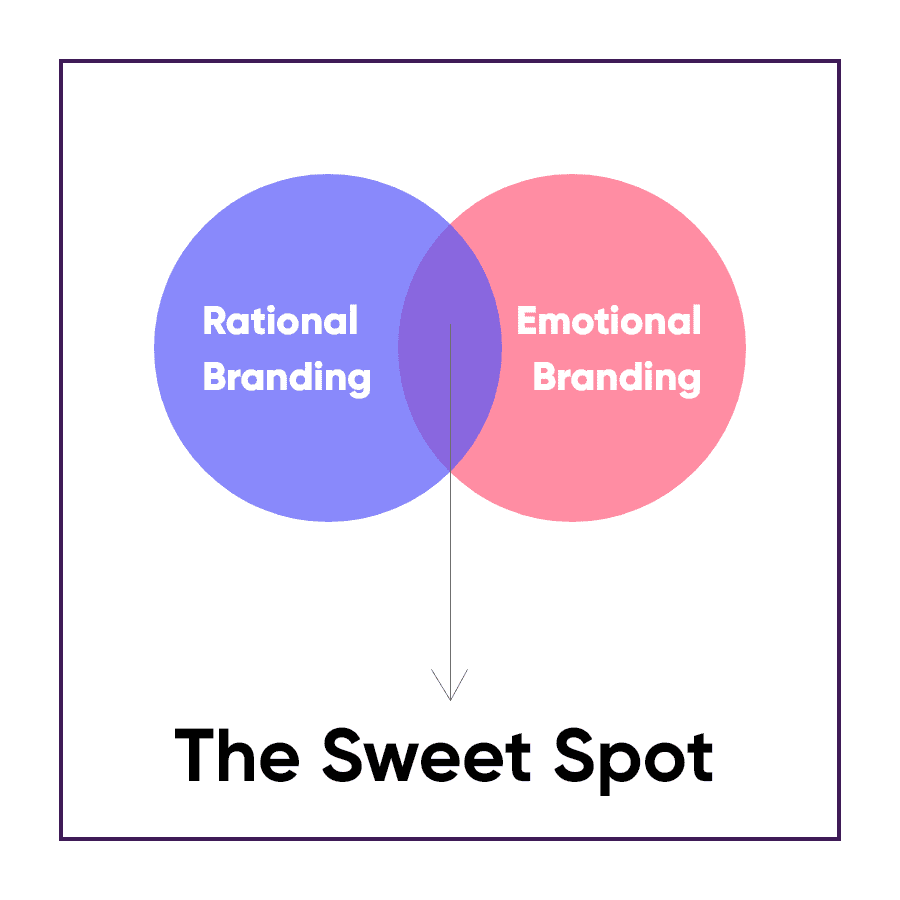
Rational & Emotional Branding: Connected Or Poles Apart?
Branding is the science of making appealing promises and the art of delivering them. Companies and brands make several attempts and efforts in nailing the two through a variety of methods and strategies that can be basically classified as Rational and Emotional.
What is Rational Branding? Anything that involves reason or logic is called rational. So rational branding means a branding strategy that involves considering the benefits of a product. It highlights the reasons for picking a product.
What is emotional branding? When you deal with people, you deal with their emotions too. Hence a branding strategy developed considering the emotions of the target audience is called emotional branding strategy. The campaigns designs are in such a way that the potential clients are able to connect with the brand. While the former creates the reason, the latter creates the desire.
There are a few differences between Rational branding and Emotional branding.
1. Rational Branding aims at selling, whereas Emotional Branding aims at connecting with consumers, to ultimately boost Sales.
2. Rational Branding creates awareness of the brand. On the other hand, Emotional Branding creates a sense of belongingness.
3. The product is at the center of the Rational Branding strategy. In case of the latter, the buyer or consumer is at the centre of the strategy.
4. Warm, soft colors and photos of people often create emotional brand appeal. Bright colours, photos of the product, and showing the result of using the product or service are some common rational brand appeal strategies.
Let us now witness how the two approaches have tightly knit or interwoven concepts.
When our emotional desires begin to shift toward a prospective brand, we align our reasons to be consistent with them.
In the words of Maya Angelou, “People will forget what you said, people forget what you did, but people will remember how you made them feel.”
Emotion plays a role in how you react to everything. Your brain has hard-wired emotional responses in it. The reaction is instinctive. Every ad, including the most rational one, will elicit an emotional response.
That response is also personal. A rational ad may list the benefits of the product, and be hence called rational. But what if the benefits of the product are emotionally appealing?
They reflect the adage that consumers buy with emotion and justify the purchase with the rational information because everyone likes to think they make well researched and informed purchasing decisions the majority of the time.
However, there is no such thing as a truly rational decision. We may try to explain that a decision is rational, but what is cloaked inside the ‘rational decision’ is almost always emotional.
Example: Why do we look to save money on a purchase? Money has no intrinsic value. It’s what you can do with the money that matters. We make a rational decision of saving money, only to spend the saved money on buying something that we are emotionally invested in; like buying a more beautiful house, a gift for a loved one, or just simply buying your daughter’s favourite cookies.
Sure, buying new furniture may actually be a rational need, but then why do we take weeks and weeks to choose it? Why do we look for furniture that looks elegant and makes us feel ‘homely’? Isn’t storage and physical comfort the only thing that should matter?
Yep, emotions are everywhere!
Conclusion:
Why spend $10,000 on a watch that takes a year to build? What is “rational” about spending the extra money for that? Rolex is an elegant hand-made piece of jewellery that took a year to create. Talk about indulging one’s emotions!
Tell you what, let’s be even more rational: Rolex will come out with a watch that takes 2 years to create, and charge $20,000 for it.
When we see a successful advertisement that lists only the products and offered features, we can rely on rational branding for successful advertising. But, as long as any advertisement shows something more – even a hot man or woman at a cash counter or a car driving in snow, the ad is now an emotional message or at least a blend of both. No purchase decision is purely rational and no 100% rational advertisement can be successful.
So, we can safely say that both Emotional as well as Rational Branding look to appeal the emotions, except that Rational Branding does that in an indirect way.

One aim, different approaches.
After all, it’s ultimately the brain itself that secretes emotions!
For more diverse perspectives and rich content, stay tuned!
Do you want behavioral economics related idea to kickstart? Learn fundamental rules you can’t afford to ignore about behavioral economics.
Exploring design insights and creative ideas on the Leo9 Studio blog can inspire your next project. After a deep dive into design trends, why not unwind with some excitement at Vavada Casino? It's the perfect way to relax and enjoy thrilling entertainment after a productive day.





